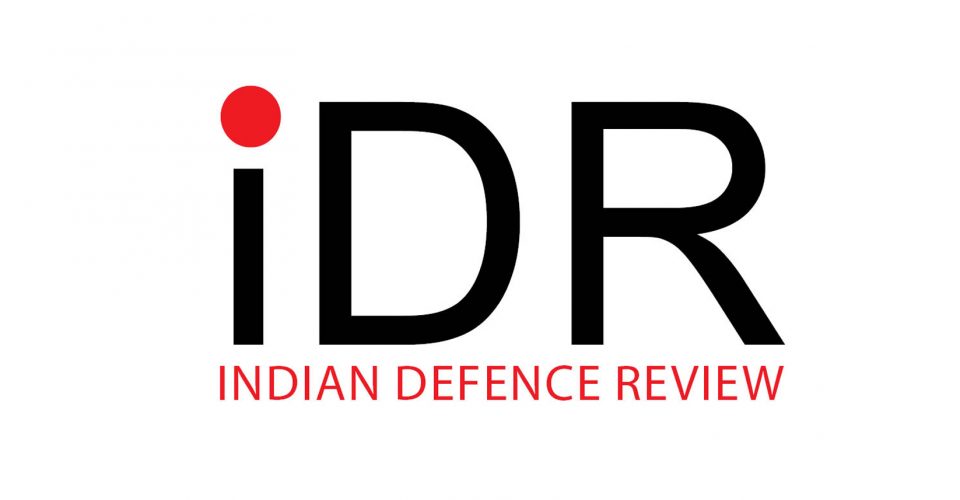- President Xi Jinping Comes Calling-On – November 29, 2014
At the Indian Council of World Affairs, the Chinese President hoped that China and India would be the ‘express trains’ driving regional development as well as the ‘twin anchors’ of regional peace. “When China and India join hands for cooperation, it will benefit not only the two countries but also the entire Asia and the world at large,” he said adding, “Nothing is more imperative than to deliver a more comfortable, more secure and happier life to the people.” Once again, the President’s words do not tally with the situation on the ground.
- The People’s Liberation Army: Post Plenum III – March 1, 2014
The Third Plenum admitted that the forthcoming reforms would decide the destiny of modern China. The statement concluded with “the need to deepen reforms in order to build a moderately prosperous society, and a strong and democratic country, as well as realize the Chinese dream of national rejuvenation.” Xi Jinping’s reforms may remain a dream. Sinocism, an excellent newsletter which analyzes the current events in China, commented: “The decision is impressive and shows that the leadership is both aware of and committed to deep reforms. …the truly hard part is not the drafting but the implementation of changes that will affect interests throughout society. But at least Xi has clearly articulated [his] resolve and vision for reform.” Is it enough?
- China Innovates – December 20, 2013
When Steve Jobs passed away, experts debated as to why China did not produce its own Steve Jobs, Bill Gates, or Mark Zuckerberg? One contributor to Forbes explained that the emergence of such ‘innovative’ entrepreneurs “does not blend well with China’s culture of Confucian conformity to existing norms. Throughout China’s history, the established order saved little respect for inventors, entrepreneurs, and business pioneers.” There is some truth in this, but the Confucian conformity added to the Communist bureaucracy and the supreme importance of the Party’s diktats is today balanced by a tremendous will to ‘innovate’ in order to materialise the Chinese Dream. The Indian Dream has unfortunately not even been formulated as yet. It is a great pity because the ingredients (brains) are very much present.
- The Chinese Dream is Over: The Seven Perils – September 25, 2013
On August 19, an important meeting was held in Beijing during which President Xi Jinping called for a renewal of China’s focus on Marxist ideology.
Xi was addressing a national conference on ideology and propaganda attended by top central and regional party ideology officials, media censors and media regulators.
- The Advancing Borders of the Chinese Empire – September 17, 2013
The incidents in the Depsang Plain, near the Karakoram Pass in April or more recently, in Chumar in South Ladakh, are the continuance of Nehru’s blind spot for China. There is today a huge difference of ‘perception’ on the location of the Line of Actual Control which over the years has been moving towards the South and the West. The 1959 LAC was indeed far more advantageous for India than the present LAC.
- The Bangalore Aeroshow 2013: Musings- February 10, 2013
The thought that kept coming to my mind while walking kilometers under the hot sun of the Yelahanka Air Force Station, near Bengaluru (where the 9th International Exhibition on Aerospace, Defence & Civil Aviation was held between February 6 and 10), was what happened 50 years ago on the Himalayan slopes.
India was taken by surprise and treacherously attacked by the People’s Liberation Army and badly thrashed in the NEFA sector as well as in Ladakh. Mao Zedong used the pretext that India would have crossed the McMahon line in the Tawang area to teach Nehru (and India) a lesson.
- The Chinese Dream is Over: The Seven Perils – September 25, 2013
When Steve Jobs passed away, experts debated as to why China did not produce its own Steve Jobs, Bill Gates, or Mark Zuckerberg? One contributor to Forbes explained that the emergence of such ‘innovative’ entrepreneurs “does not blend well with China’s culture of Confucian conformity to existing norms. Throughout China’s history, the established order saved little respect for inventors, entrepreneurs, and business pioneers.” There is some truth in this, but the Confucian conformity added to the Communist bureaucracy and the supreme importance of the Party’s diktats is today balanced by a tremendous will to ‘innovate’ in order to materialise the Chinese Dream. The Indian Dream has unfortunately not even been formulated as yet. It is a great pity because the ingredients (brains) are very much present.
- Why Henderson-Brooks Report has never been released – April 2, 2012
Sir Henry McMahon never envisaged that the hurriedly conducted survey and his drawing of a thick red line on a map could trigger a war. The ‘massive attack’ supposedly planned by India cannot be taken seriously in view of the total lack of preparedness of the troops in terms of armament, ammunition, clothing and food supply. More than half of the casualties are said to have succumbed to the cold and the shortage of food. Some senior officers in the Army Headquarters in Delhi may have dreamt to ‘throw out the Chinese’ or take ‘the Thagla Ridge’, but in reality, it was a pipe dream only.
- The War of 1962 Herderson Brooks-Bhagat Report – January 2011 (Vol 26-1)
In 2008, the Defense Minister, Mr. A.K. Antony told the Indian Parliament that the Henderson-Brooks could not be declassified. Mr. Antony claimed that the report could not be made public because an internal study by the Indian Army had established that its contents “are not only extremely sensitive but are of current operational value”…
- Strategic Aspects of Climate Change – July 2010 (Vol. 25-3)
Many defense strategists will laugh when they will hear in vogue expression ‘climate change’ associated with military affairs, but they will perhaps think twice when they realize that even the very serious Quadrennial Defense Review Report (QDR) of the US Department of Defence has consecrated several pages to the subject in its last issue.
The chapter titled Crafting a strategic approach to climate and energy states: “Climate change and energy will play significant roles in the future security environment. The Department is developing policies and plans to manage the effects of climate change on its operating environment, missions, and facilities.”
- The killers’ mace of the dark visitors – January-March 2009 (Vol 24-1)
In its 2008 Report to the US Congress, the U.S.-China Economic and Security Review Commission4 mentions China’s cyber operations program. It is quite frightening. To quote the report: “US computer security authorities detected a series of cyber intrusions in 2002 into unclassified US military, government, and government contractor Web sites and computer systems. This large-scale operation, code named Titan Rain by the US government, was attributed to China. Targeted locations included the US Army Information Systems Engineering Command, the Naval Ocean Systems Center, the Missile Defense Agency, and Sandia National Laboratories…
- Missiles in Tibet – July-September 2008 (Vol 23-3)
Delingha area is now linked to Lhasa and Southern Tibet. Let us not forget that the train could be used to transport the TELs and the command and control (C2) facilities needed to deploy the missile launcher at a chosen place. This practically means that a DF-21 launched from Central Tibet (around or south of Lhasa) can now reach Chennai…
- Himalayan Rivers: Geopolitics and Strategic Perspectives – April-June 2008 (Vol. 23-2)
I have mentioned the book Unrestricted Warfare, written by two Senior Colonels, Qiao Liang and Wang Xiangsui. They argue that China should start surveying the ways to counter new forms of war as did Sun Tzu in his Art of Warfare over 2000 years ago.
One chapter speaks of “Ten Thousand Methods Combined as One: Combinations That Transcend Boundaries”. It is the art of combining different elements of these various forms of warfare. One of the many ways of unconventional warfare identified by them is ‘environmental warfare’.
India should certainly remain vigilant.
- From Friendship to Partnership – January-March 2008 (Vol 23-1)
TO GRASP THE INTRICACIES OF INDO-FRENCH relations in the field of defence and security, it is necessary to first have a look at some issues which may seem unrelated, but which will help us to understand the historical background and get clearer perspectives on the future.
- China: Friend or Foe – October – December 2007 (Vol 22-4)
YEAR 2008 WILL BE A SPECIAL YEAR. IT IS A LEAP year and for the first time in modern history, China will organize the Olympic Games. One remembers that in ancient Greece, this was a time for ‘Truce’ (or ‘Ekecheiria’). Established by a treaty in the 9th century BC, the Truce period witnessed athletes, along with artists and pilgrims, often with their entire families, travelling to attend or participate in the Olympic Games before returning in total safety to their respective countries.







